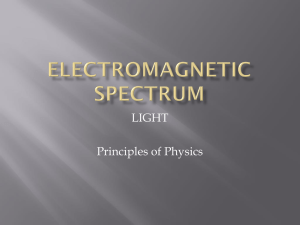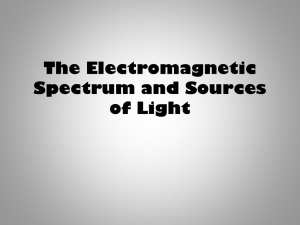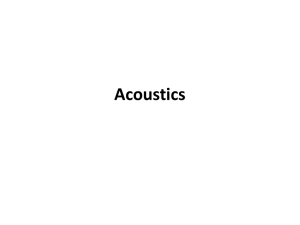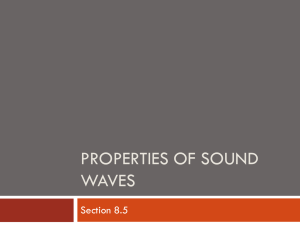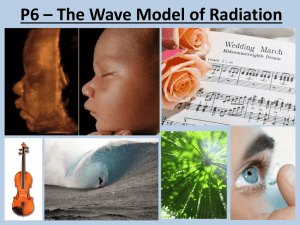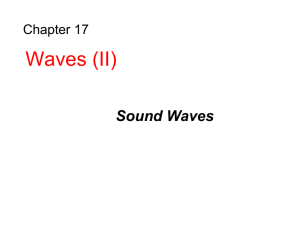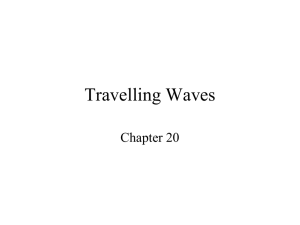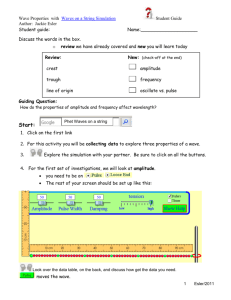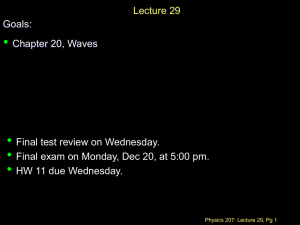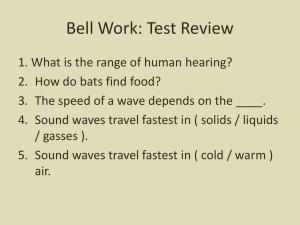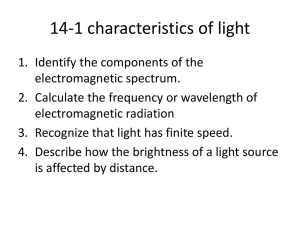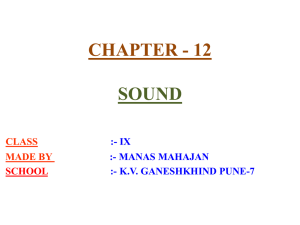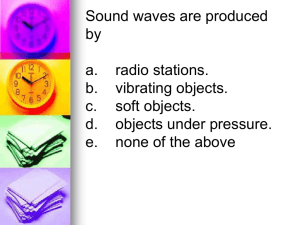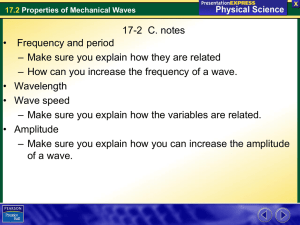File - I Love Physics Forever!
advertisement
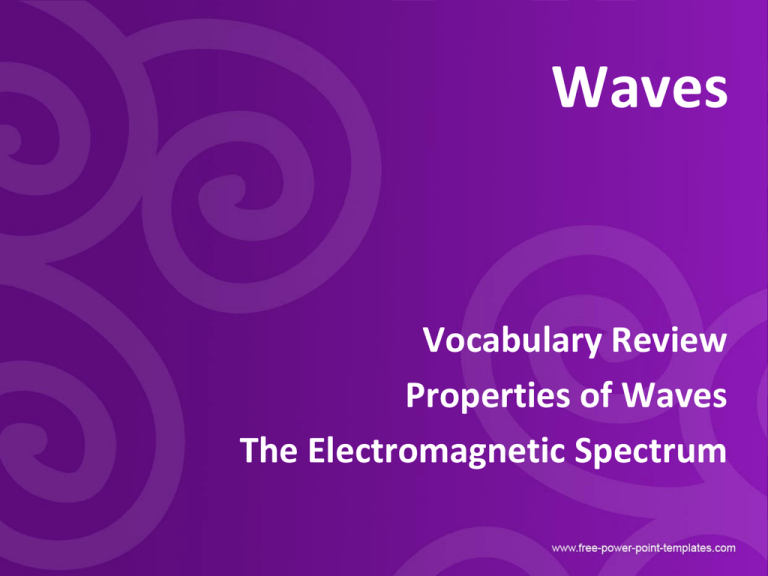
Waves Vocabulary Review Properties of Waves The Electromagnetic Spectrum Vocabulary Review • Progressive waves • Describing wave motion – – – – – – Displacement Amplitude Wavelength Period Frequency Speed Intensity • Energy passing through a unit area in unit time. • Intensity ~ Square of the amplitude • I ~ A2 • Intensity ~ 1/d2 • Where d is distance from source Example 1 • A health inspector is measuring the intensity of a sound. Near a loudspeaker his meter records an intensity I. This corresponds to an amplitude A of the sound wave. At another position the meter gives an intensity reading of 2 I. What is the corresponding sound wave amplitude? Example 2 • The intensity I of a sound at a point P is inversely proportional to the square of the distance x of P from the source of the sound. Air molecules at P, a distance r from S, oscillate with amplitude 8.0 μm. Point Q is situated a distance 2r from S. What is the amplitude of oscillation of air molecules at Q? Phase • The angle at which the wave motion started. Phase 0⁰ 180⁰ or п Phase 90⁰ or п/2 270⁰ or 3п/2 Phase Difference • The difference in angles between two waves at a specific point. Phase Difference Phase difference of п at all points Phase Difference Phase difference of п at all points Coherence When two waves have constant phase difference, then they are coherent. Coherence occurs when two waves have the same frequency or period. Non-Coherence In Phase Phase difference is a multiple of 2п at all points. Out of Phase Phase difference is not a multiple of 2п. Out of Phase Phase difference of п at all points Wave Properties • For all waves – Reflection • Bouncing of waves off a surface – Refraction • Change of wave speed as it passes from one medium to another (from one depth to another) • Bending of waves – Diffraction • Bending of waves around a barrier Wave Properties Question • Which wave properties change when light passes from air into glass? • A colour and speed • B frequency and wavelength • C speed and wavelength • D wavelength and colour Polarisation • Oscillation that takes place in one direction. • Only true for transverse waves. Polarisation The Electromagnetic Spectrum • Electromagnetic waves are transverse waves • They are non-mechanical waves – Do not require a medium to transfer energy • Travel at the same speed in a vacuum – 3 x 10 8 ms-1 Orders of Magnitude (Wavelength) • Gamma Rays • X-Rays • Ultraviolet Rays • Visible Light – ROY G BIV • 10 -14 m • 10-10 m • 10-7 m • 10-7m • (700 nm -400 nm) Orders of Magnitude (Wavelength) • Infrared • Microwaves • Radio Waves • 10 -6 m • 10-2 m • 10 2 m

